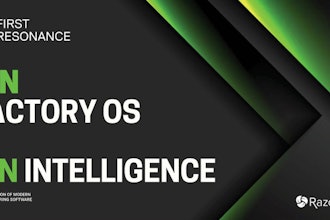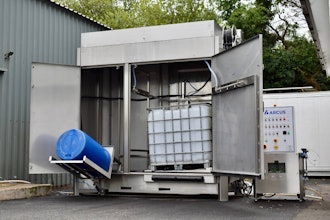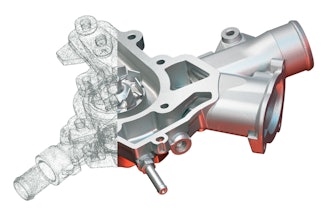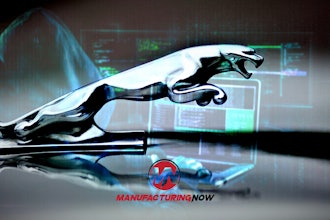
For decades, industrial equipment manufacturers have been accumulating massive amounts of data—most of which has been left to "fall on the shop floor," unused. With increasing use of Industry 4.0 (I4.0) technologies, there's a sea change in the speed at which this information now flows and changes. The challenge lies in converting this volume and velocity of data into actionable insights that can positively impact a manufacturer's bottom line.
AI has certainly been touted for its potential to convert data into insights and actions and has quietly buoyed the value of I4.0. But many manufacturers are still at a loss to know how and where to leverage AI in their day-to-day activities. The 2024 Manufacturing Technology Survey, conducted by Researchscape showed that 90% of manufacturers have implemented some form of AI, but a significant portion feel the AI they've adopted hasn't delivered optimal value. But in a rush to get on the AI bandwagon, many have taken a "ready, fire, aim" approach (not unlike the "pilot purgatory" of the early days of I4.0). Today, they're taking a step back to consider a more enterprise-level strategy to help drive their AI initiatives.
Leveraging Data Clouds
To effectively harness the power of AI, manufacturers are looking at the cloud as a means to collect and centralize data from various systems. By aggregating data from production lines, supply chains, customer orders, and more, and putting all of it into a common data location has been the strategy to create a comprehensive repository of actionable information. Increasingly, however, IT leaders are finding that "moving" data from silos may not be as effective as "linking" to that same data using a "zero copy" approach.
Centralizing different data sources in a network of data clouds (sometimes referred to as "data fabric") will become increasingly essential for powering a more comprehensive AI decisioning platform to address all of a manufacturers' data. It will also enable manufacturers to ensure data consistency, accessibility, and scalability, and a data cloud will also make it easier to apply AI at an enterprise level to derive more meaningful insights.
Converting Data into Insights and Actions
Due to disjointed solutions and data silos, many manufacturers resorted to using AI point solutions in various business units. But they've begun to realize this isn't an ideal approach, and they're turning to more comprehensive decisioning platforms to deliver value. This decisioning platform can incorporate various types of AI, including machine learning, business intelligence, generative AI, and predictive capabilities—but on a unified platform. This approach also connects the relevant data streams central to tracking financial performance, volatile conditions, and new opportunities.
Speed-Reading Market Conditions
In a fast-paced market, the ability to quickly interpret and respond to changing conditions has also been crucial. With an AI-powered decisioning platform, manufacturers will be able to predict demand fluctuations and adjust production capacity accordingly. The platform's intelligent capabilities enable manufacturers to "speed-read" market conditions and respond—versus react to changing customer demands more reliably. By incorporating and analyzing dynamic data streams and projecting future trends, AI can foresee demand and supply disruptions, allowing manufacturers to adjust production schedules and inventory levels. This agility is vital to ensuring timely order fulfillment and maintaining customer satisfaction.
Interpreting Data as Signals
Another key factor to being able to successfully leverage a decisioning platform is monitoring and interpreting manufacturing signals to connect inbound demand, capacity, and supply information that arrives in continuous streams. In this way, fast-moving data streams can serve as early indicators of the market's direction. By using AI in collaboration with the signal chain, business leaders can interpret signals, as if having "foresight" from a crystal ball.
Manufacturers would be able to read signals in real-time, making adjustments to optimize production and profit margins dynamically. For example, using I4.0 signals that can predict if a machine is going down, AI can take the next step and signal an expected capacity reduction, or even suggest a different machine with available capacity. This would prompt planners to reset the run to fulfill orders.
Driving Efficiency & Productivity
Another key goal of an AI-driven decisioning platform is to boost efficiency in manufacturing operations. According to additional data from the Manufacturing Technology Survey, 41% of manufacturers identified operational performance as a key driver for their tech investments. After all, the more goods manufacturers can ship in the same amount of time, the more profit they make.
AI can enhance operational efficiency by automating routine tasks and optimizing resource allocation. For instance, AI can analyze production data to identify bottlenecks and suggest process improvements. It can streamline production planning and supply chain coordination, reducing the need for manual intervention. By continually optimizing operations, manufacturers can achieve higher productivity and profitability.
Overcoming Challenges
Despite potential benefits, adoption of AI in manufacturing comes with many obstacles. In response to the Manufacturing Technology Survey, manufacturers said key constraints to transformation include a lack of the right talent (26%) and a lack of knowledge (26%).
To overcome these issues, manufacturers are striving to partner with technology providers who offer industry experience coupled with tech expertise in AI and digital transformation. It's difficult for manufacturers to keep pace with AI's rapid advancements. A trusted advisor provides an experienced set of tech eyes to ensure AI best practices can deliver tangible returns. In other words, these advisors understand what AI applications would truly matter to their operations.
Embracing the Future of AI
AI-powered decisioning has the potential to transform the manufacturing industry, enabling companies to navigate the complexities of day-to-day market shifts. By converting data into insights, speed-reading market conditions, and interpreting signals, manufacturers can optimize efficiency, growth, and responsiveness to trends and customer needs.
While challenges remain, partnering with the right technology providers can help manufacturers leverage AI to its fullest potential. While the pace of AI advancements can be intimidating—these tools are extremely powerful. So, it's well worth the time to take a thought-out approach. These initiatives could provide manufacturers opportunities to solve emerging challenges and achieve greater profitability.
By avoiding AI point solutions and moving toward a more strategic platform approach, manufacturers will keep pace with changes in customer demand and position themselves to adapt to ongoing disruptions.
Stu Johnson is Vice President of Product Marketing at Rootstock Software. He has over 35 years of experience in manufacturing and has held various leadership roles at enterprise software providers. He's also served several global manufacturers in the consumer, aerospace, automotive, medical, and food & beverage industries.























